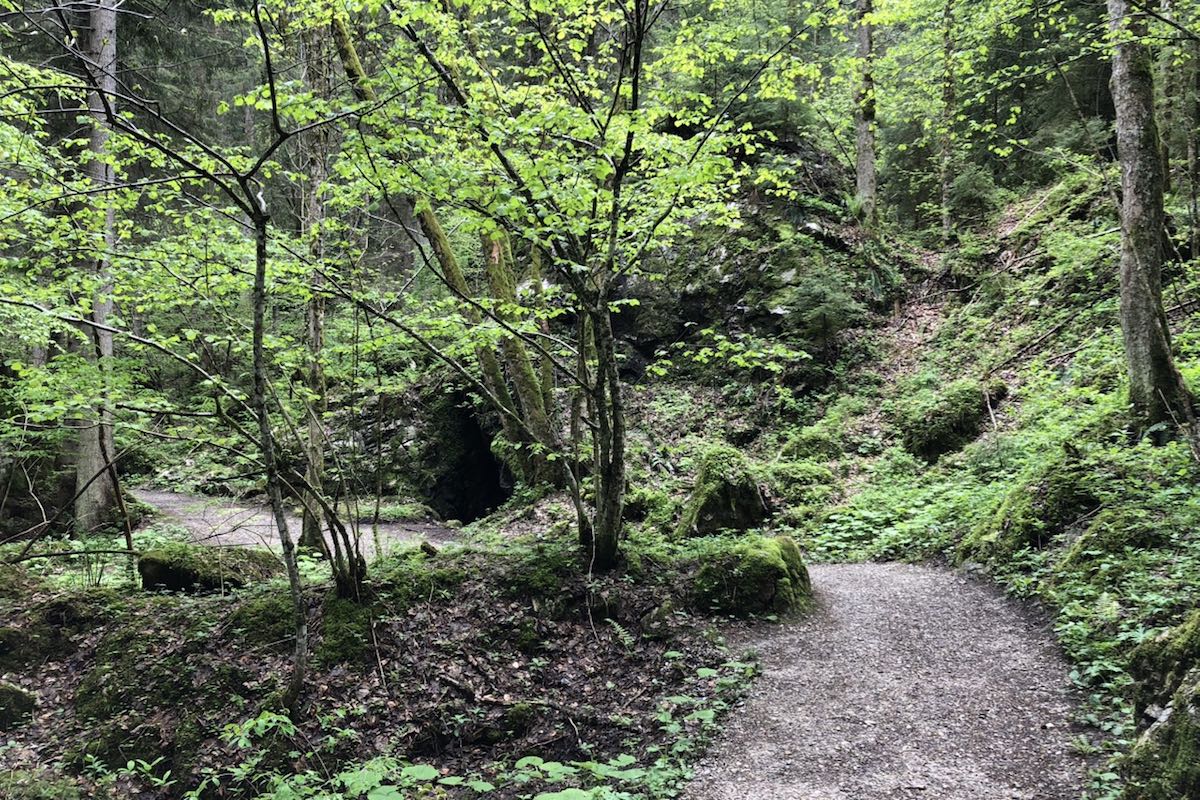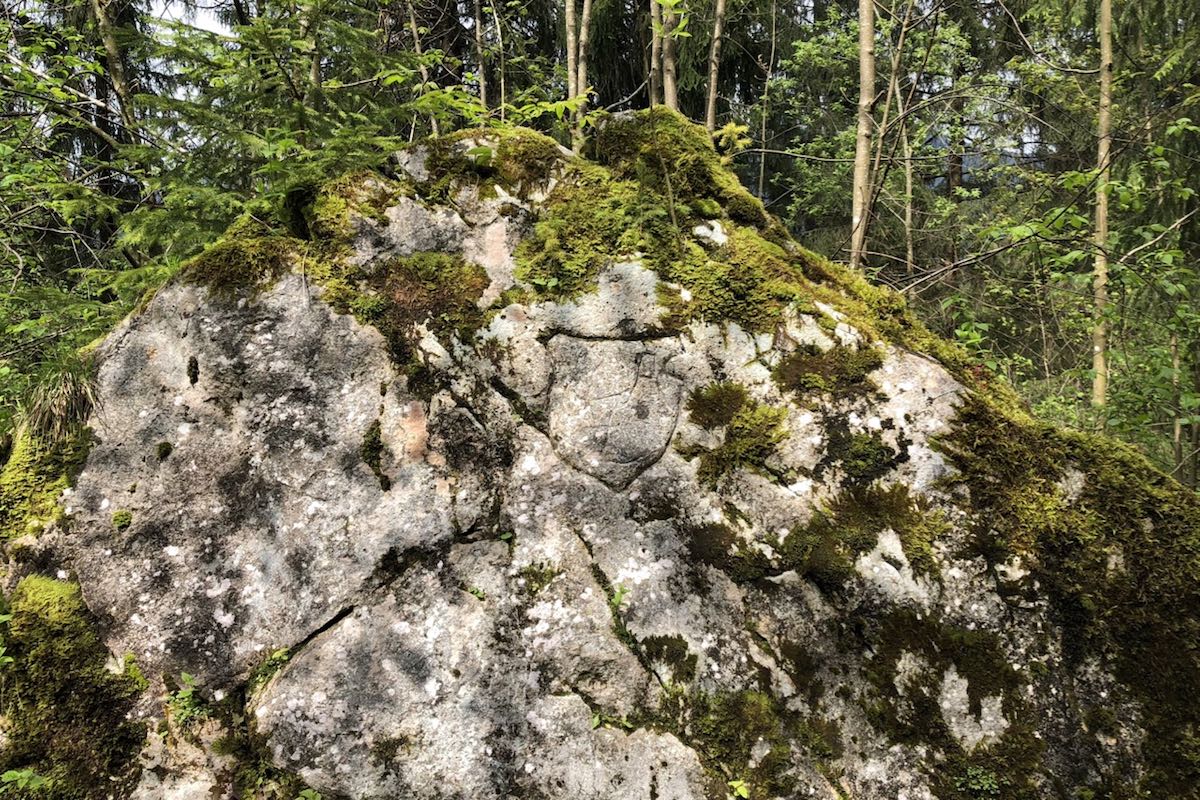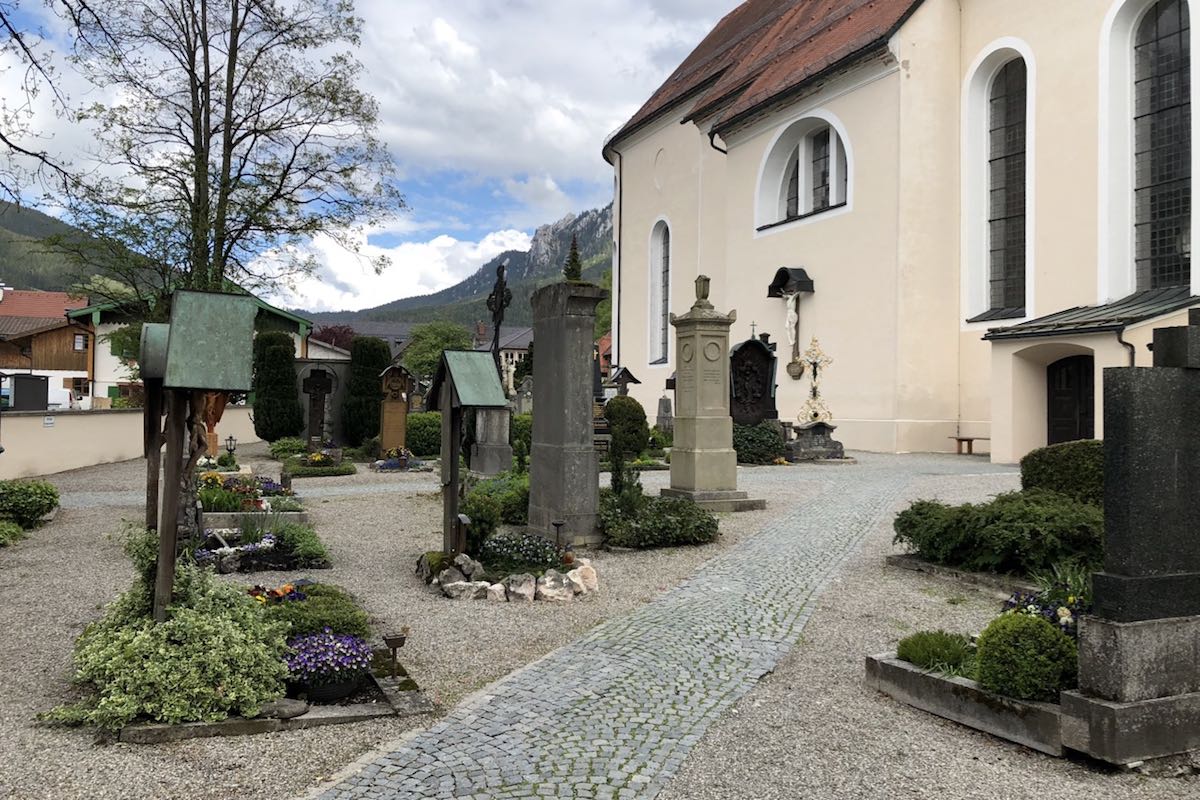A reading and hike with Oliver Pötzsch from 26.05.2019
On the journey to Oberammergau I think back:
Four years ago, I bought my first historical novel of Oliver Pötzsch. I had heard quite a lot about his Hangman’s Daughter Tales and knew that the main characters are resident in Schongau, the town where I went to grammar school. On my way back from a business trip, while browsing books in Schmitt & Hahn at Nuremberg Central Station, I stumbled across “The Play of Death”, volume six of the tales. I read the text on the back cover and learned that the story is about unravelling the mystery of a death during the rehearsals of the famous Passion play in Oberammergau in 1670. Immediately, I knew that today I would start my adventures with the Kuisl family. I bought the book and started reading on the train.
Since then, I have read all Hangman’s Daughter books. For me the wheel has turned full circle as I’m about to experience Oliver Pötzsch live and trace the Hangman’s Daughter around Oberammergau with him. It will be a literary excursion as Oliver is not only a gifted author but also a passionate hiker. I’m looking forward to dive into the story of the book and the history of the surrounding area. The event was organised by the local and very sympathetic Schwarz bookshop.

Sitting in the Hotel Alte Post in Oberammergau, the meeting and starting point for today’s reading and hike, with my wife a little later, I see tables with piles of books by Oliver Pötzsch. I’m impressed how much he has written already.

I look through the menu and learn that the Hotel Alte Post was first mentioned in 1612 and is believed to be the oldest inn in the village. Already in 1905 it got its first telephone connection, the only one in the administrative district besides the police station in Garmisch. My hunger forces me to turn the page. The Bavarian specialties grab my attention. Roasted pork with dark beer sauce, potato dumpling and red cabbage. Who can resist that? I can’t.
Shortly after our food is served, Oliver Pötzsch arrives back with the morning group. The room is filling up with people, noise and life. Soon the roasted pork is gone. After a short set-up, the creator of the Hangman’s Daughter Tales welcomes us and introduces himself. He is working as a full-time author since around ten years, but already wrote his first novel during the time of his graduation. It hasn’t been published yet and is still stored in the poison cupboard at home.

We get a short introduction into the plot of the novel. Simon Fronwieser’s son Peter is sent to school in Oberammergau. There, the man who is to play the part of Christ in the Passion play has been nailed to the set’s cross. Together with the Schongau hangman Jakob Kuisl and his daughter Magdalena Simon starts to investigate the murder.
Oliver Pötzsch tells us that he always makes up his stories and puts them into a true historical setting. He reads out a passage that conveys impressively the special character of Oberammergau. The geographical circumstances formed the people and their activities. Because of the surrounding mountains there was always a lack of space and as a result there is hardly any farming in Oberammergau. The people were forced early to be creative. The nearby forests and the location at a pilgrim road paved the way for the world-renowned woodcarving business of today that focused on woodcarving for pilgrims in its beginnings.
After reading the short passage, Oliver Pötzsch introduces us to his little pharmacy that he brought with him. Anybody who has read one of his books knows the detailed descriptions of medicine from those days. They make the story more illustrative and help the reader to familiarise himself with the time of the Hangman’s Daughter. Besides his explanation of various herbs, Oliver’s descriptions of the so called dirt pharmacy are very impressive. It is unbelievable what people used in those days: Flour made of skulls, Mummia, human fat. The names give an indication about the main ingredients.
Something that we can try without much risk is the home-made theriac of his father. The ingredients are from his own garden. I have to try it.

The liquid warms my throat and I feel ready for the hike. As theriac is also widely applied in the Hangman’s Daughter books I feel that I slowly merge into the (his)story.
Then we set off. We leave the Hotel Alte Post in southern direction along Dorfstraße and turn left into Schnitzlergasse. After a few minutes we stand in front of the parish church St. Peter and Paul.

Here is the origin of the world-renowned Passion play. In 1633 the people of Oberammergau took their vow to perform the tragedy of the Passion if they would be spared from further death caused by the plague that was spreading at the time. And as they were actually spared, they performed the Passion play for the very first time in 1634, exactly here on the graveyard on top of the graves of the people who died from the plague. The gravestones were simply put down flat on the ground before the play and put up again afterwards. This is what Oliver Pötzsch loves about catholic Bavaria: Celebrations and religion go hand in hand very well.
We continue our walk and follow the path Am Mühlbach, cross the Eugen-Papst-Straße and stand at the bank of the Ammer river.

Here, Oliver Pötzsch tells us something about the relationship between man and nature at the time. Nature was the enemy of man. It was against them. People had to control it. Wanderlust was something that couldn’t be imagined. People also didn’t climb mountains in their free time. That doesn’t surprise me. I think they had to work hard enough and didn’t want to exhaust themselves in their free time.
We cross the bridge of the König-Ludwig-Straße, turn right and walk along the Ammer river who gave its name to the village and the valley. Soon we turn left and walk through a small forest. We hit König-Ludwig-Straße again, turn right and walk uphill until we arrive at the Crucifixion Group.

This monument was donated by King Ludwig II. after he attended his own private performance of the Oberammergauer Passion play in 1871 which left him moved and shaken. The Crucifixion Group is made of marble from Kehlheim and was the biggest stone monument in the world at the time.

We now follow the path behind the Crucifixion Group and after a few minutes reach the Rätselweg, the path of mystery. We see a lot of little angel figures that have found a new home here in the nature. Nobody can explain why they are here. It is definitely mysterious.




Our next stop is the Malenstein stone. There is a lot of things tob e told here. But first we have to find the head of a Roman. After that we learn a lot about the so called Venedigermandl (little people from Venice) who left mysterious signs in the stones around here. Was it a secret language in those days? The Malenstein is also part of the Hangman’s Daugther novel. Oliver Pötzsch found a cave here, in which Peter hides during his adventures. I remember these thrilling scenes very well.

We continue to follow the path and pass another stone, the Ambronenstein, on which the coat of arms of the association “Die Ambronen”. Its members have named their association after the celtic tribe of the Ambrones. They regularly met in the pub Ambronio (today Maxbräu) in Oberammergau. As I take acloser look at the stone and the coat of arms, the sun comes out and puts the entire scene in beautiful light. A magical moment!

Our next stop si the Mariengrotte, the grotto of Mary, where Oliver Pötzsch shows and explains to us what a Charivari is.

Then we walk up to the Döttenbichl. I get the chance to talk to Oliver Pötzsch. We have a common acquaintance: Helmut Schmidbauer, local history curator of the Weilheim-Schongau district. He motivated Oliver Pötzsch to write a novel about the Hangman’s Daugther and provided him with helpful Details. Mr. Schmidbauer was also my history teacher when I graduated. Another wheel has turned full circle.

At the Döttenbichl we encounter not only celtic but also Roman history. A lot of metal pieces were found and dug out here. It is very likely that the Romans were involved in fights with the local celtic tribes. Celtic objects suggest that this place was used for sacrifices. Two different cultures who you wouldn’t have expected here, merge in this place. Then Oliver Pötzsch reads a last passage from “The Play of Death”.

We then walk back to the Ammer and towards Oberammergau. Soon we have to say farewell to Oliver Pötzsch and the hiking group. We follow the Ammer on the Malensteinweg, cross the bridge at the König-Ludwig-Straße and turn right into die Eugen-Papst-Straße.

As we reach the church we walk into the graveyard and let our minds wander around in silence. I try to imagine how it looked back in the days when they put down the gravestones and performed the Passion play.

Behind the graveyard walls, above the crosses, the Kofel mountain thrones with all ist dignity. It seems to me as if it spreads out its arms to protect Oberammergau and its people.

Soon we stand again in front of the Hotel Alte Post and have returned to the place where reading and hike have started. We get ourselves an ice-cream, walk down Dorfstraße and enjoy the atmosphere of Oberammergau. It was a wonderful and inspiring excursion! We have seen and learned so many new things! I’m very grateful for this experience and later when back home I comment a post of Oliver Pötzsch about today on Facebook. With a translation of this comment I want to finish this blog post:
Thank you very much dear Oliver Pötzsch for this wonderful hike! We had a lot of fun walking through story and history. It’s fascinating how much you can experience and learn just outside of your own door.
If you want to learn more about Oliver Pötzsch, his interesting ancestors, his books and events, visit his website. I can also recommend his Facebook page where he often shares his impressions of his hikes and travels and also shows his musical talents. And if you want to join Jakob, Magdalena and Simon in their investigation around Oberammergau, get your own copy of “The Play of Death” and immerse yourself in this exciting story.
Photos: Tim Kalbitzer
Originally published on 26.05.2020, updated on 23.06.2020.
